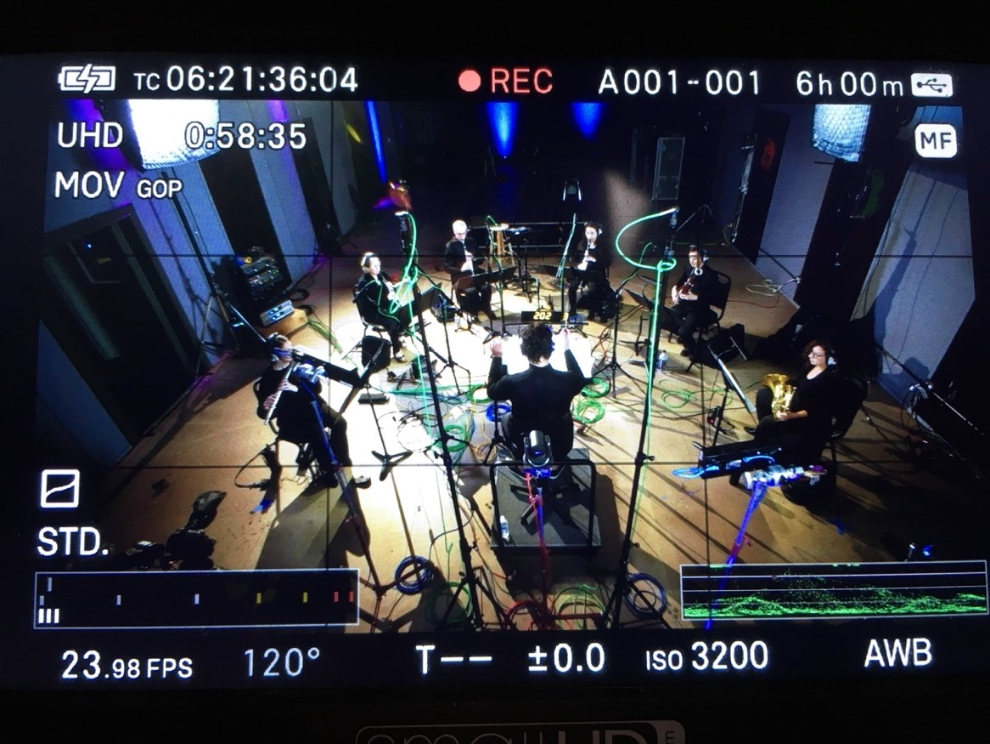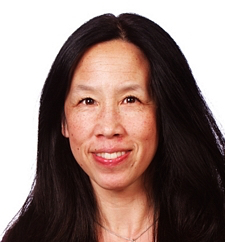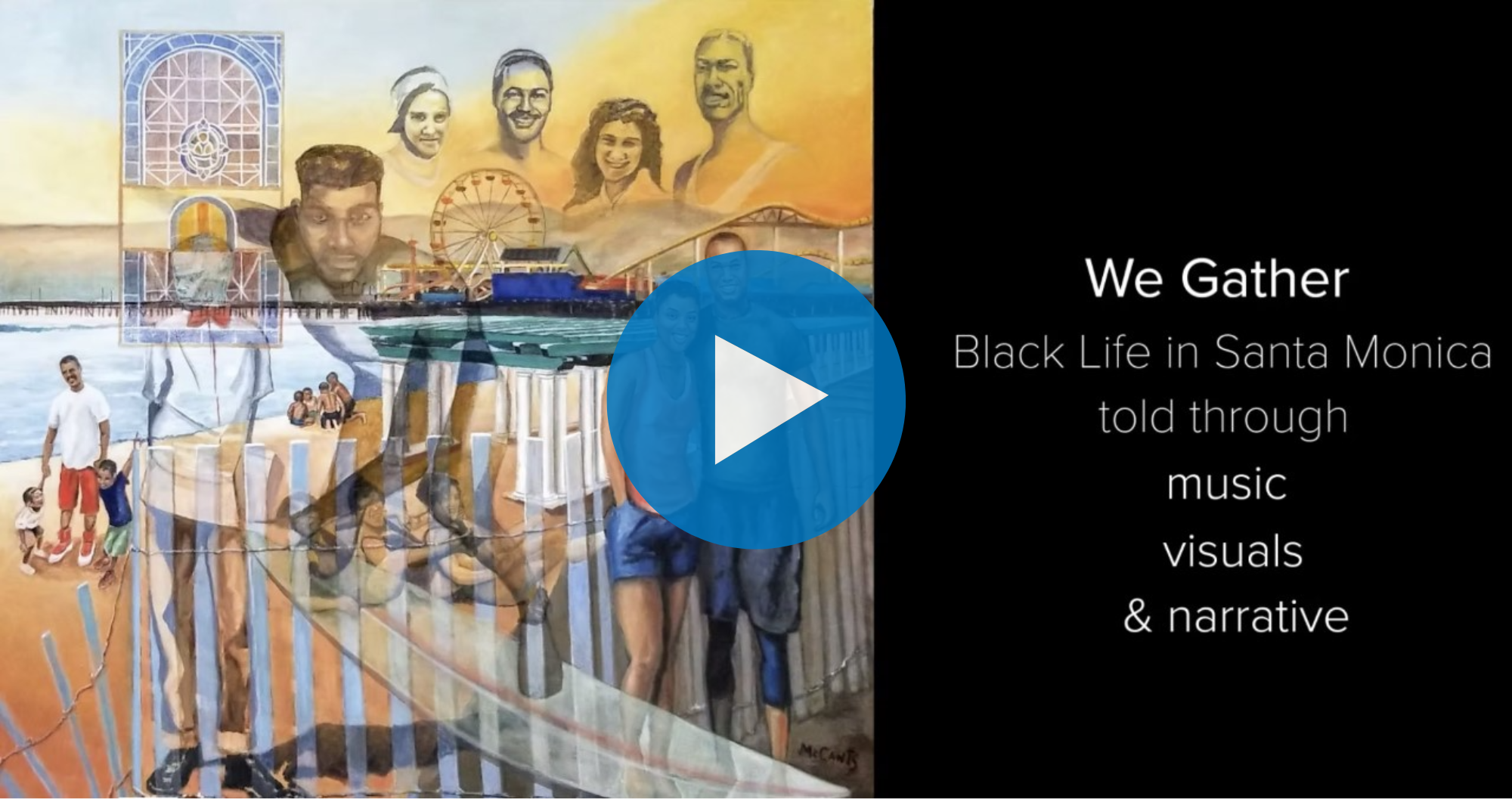ACSO Guest Blog - An Adventure in Producing We Gather: Orchestra Santa Monica's First Film
An Adventure in Producing We Gather: Orchestra Santa Monica's First Film
By Cindy Bandel, President, Orchestra Santa Monica and Producer of "We Gather"
In retrospect, looking back at our film We Gather: Black Life in Santa Monica Told Through Music, Visuals, and Narrative and considering the countless steps and hurdles to produce it, I’d say that creating Orchestra Santa Monica’s (OSM) first film really was an epic journey. People have commented about its uniqueness and how they haven’t seen anything like this done before by an orchestra. I found a saying by actor Alan Alda that seems fitting, “Originality is unexplored territory. You get there by carrying a canoe – you can’t take a taxi.”
You may be thinking, “So, what is this film exactly?” I think it’s best described as a music-based, three-movement documentary set to original music inspired by Santa Monica Black history and personal stories. Did we know from Day 1 that this was going to be our destination? Not at all, and we did quite a bit of wandering around. But during the early months of the pandemic when everything was shut down and everyone was in limbo, we did know we wanted to try to do something and go somewhere.
I invite you to watch the 25-minute film below (either now or at the end of this blog) and continue reading to learn about our journey making We Gather. I hope it provides you with some ideas and inspires you to create a community-based project with your own orchestra.
WHY OSM made this film
Equity, Diversity, and Inclusion (EDI) is something we wanted to address as an organization, and OSM felt we could achieve something toward EDI with the help of the City of Santa Monica's Art of Recovery Grant Program. At the time we applied for this grant, a Restorative Justice category presented a vehicle for doing something tangible, both for EDI and as a project for our orchestra and musicians to look forward to during the pandemic shut-down. We felt we could not pass up this opportunity.
To no surprise, we started with music and the decision to commission an original work by a local Black composer was a logical first step in developing our project proposal. OSM Music Director, Roger Kalia, was familiar with the brilliant work of composer Derrick Syke, and Roger reached out to Derrick to arrange our first project partnership. However, simply presenting OSM musicians performing original new music would not be nearly enough to address restorative justice. We needed to truly honor and celebrate the Black community. I started doing some research and ran across an article about Robbie Jones’ Historical Black Santa Monica Tours. Intriguing! This really resonated with me, and I felt this was the kind of material and substance we needed for this project. Robbie seemed like the ideal person to bring this history to life, and we were so happy to be able to recruit her.
Film director Philip Holahan entered the scene at just the right time and became a major guide in this exploration. He and I came to realize that this film shouldn't focus on our orchestra’s performance, but rather it should employ the orchestra as an integral, creative, and compelling part of presenting the history and stories of the Santa Monica Black community. So, we pursued research to develop the narrative, sought historic images, and created new ones to fit the themes used in the three movements of the music. To include even more creative energy and visual interest in our project, we also invited fine artist Kevin McCants to join our team.
PROJECT BEGINNINGS (SUMMER 2020 – WINTER 2021)
An opportunity presented itself with the City of Santa Monica opening its Art of Recovery (AOR) Grant Program in August 2020, several months after the start of the COVID-19 pandemic and George Floyd’s tragic death. The program had a Restorative Justice project category which caught our attention and inspired us to propose a project to honor and celebrate our local Black community. Of note, AOR requirements state that project proposals must meet current local health and safety pandemic guidelines. Current safety guidelines?? Well, that was a moving target and a clue we were going to have to be flexible and ready to pivot. Could we record small ensembles performing outside and then present the recorded performances outside on a large screen and/or in storefront display windows? It sounds easy now, but at the time we learned this was a no-go because it could encourage people to stand together, even outside, to watch the recorded performances. So, our final product was going to need to be presented online. Next, record outside, or in a church, or in a studio? If inside, then do we want to record the musicians against a green screen and later replace the background with images? We prepared our Letter of Intent and ended up hashing out presentation ideas with AOR over a few months before they asked us to proceed with a full proposal in January.
We started assembling our team. What would be a good way to learn about Santa Monica’s Black community? I searched online and ran across an an article about a woman named Robbie Jones who gives Santa Monica Black History Tours. Perfect! It took me a while to track her down, but I finally managed to connect with Robbie. OSM’s Music Director Roger Kalia invited composer Derrick Skye, and I recruited artist Kevin McCants, whose work I greatly admire. By an amazing stroke of good luck, cinematographer Philip Holahan just happened to introduce himself to me when this project was getting off the ground. Roger and I were impressed with his qualifications and recent work video-recording the American Youth Symphony, so Philip was recruited as film director, and we had our key team members in place!
Touring and Inspiration (Spring 2021)
In April our project was officially approved, and we were off and running. The team went on Robbie’s tour, receiving an introduction to local Black history, visiting various key sites, and hearing her personal stories.
(See Figure 1: Derrick Skye interviews Robbie Jones at First African Methodist Episcopal Church, a site which suffered from the routing and construction of the Santa Monica Freeway through its grounds.)
Derrick arranged a follow-up tour with Robbie where he recorded her talking about memories of growing up in Santa Monica. After he and Roger decided on instrumentation, Derrick worked quickly and by mid-June he completed all three movements of his composition he named We Gather. Kevin used the history and stories about Bay Street Beach as the theme of his painting which serves as our film’s cover art.
Recording the music performance: OSM’s first studio session (Early Summer 2021)
 Our studio recording sessions were scheduled during a narrow window of opportunity in early July when pandemic guidelines were relaxed. The stars were aligned! Our musicians were finally able to meet in person again, plus distancing and face masks were not required. Roger led three-hour sessions over a couple of days to record Derrick’s music. OSM musicians did a stellar job playing the music under the superb guidance of Roger and Derrick.
Our studio recording sessions were scheduled during a narrow window of opportunity in early July when pandemic guidelines were relaxed. The stars were aligned! Our musicians were finally able to meet in person again, plus distancing and face masks were not required. Roger led three-hour sessions over a couple of days to record Derrick’s music. OSM musicians did a stellar job playing the music under the superb guidance of Roger and Derrick.
(See Figure 2: Monitor view of recording session at Hollywood Scoring Studio.)
Philip and his crew expertly captured the musicians’ performances. Next came post-production audio mixing and mastering by one of Derrick’s colleagues. Once the audio master was handed off to Philip, he and a colleague selected and synchronized the video takes to the audio to create the final base layer of film showing the musicians’ performances.
Narrative, Images, and Community Connections (Summer – Fall 2021)
To me, this next phase of the project was the real exploration. Fairly early on, we understood the film would primarily feature people, scenes, and events. One undertaking was acquiring and creating images and video to support the themes Derrick selected from Robbie’s stories to use in his music.
(See Figure 3: Philip Holahan captures Kevin McCants creating his painting of Bay Street Beach, a segregated beach in Santa Monica from the mid 1920’s to early 1960’s.)
Another huge undertaking was developing a narrative for each movement to provide context for the imagery. Philip and I devoted several months to research, using sources including libraries, museums, and newspaper archives. We arranged a video shoot at Bay Street Beach with Robbie and friends. We walked around and took pictures of the Santa Monica Freeway and the Pico Neighborhood. We visited Santa Monica’s historic Shotgun House and an 18th Street Art Center exhibit focusing on the Santa Monica black community. We drove around town and took pictures of murals located in alleys, a freeway underpass, a community center, and local stores. We’d walk up to people and ask, “May we take your picture for a special project?” Everyone was happy to oblige us! We visited several churches, met with their members, attended church services and a Juneteenth celebration. We interviewed numerous Santa Monica residents, past and present, and heard their stories and asked for pictures and leads to get even more pictures. We consulted with a historian who was extremely helpful in helping us piece our narratives together accurately and cohesively.
Philip crafted the narrative and continued to network and uncover additional fabulous images and videos. And he was superlative in weaving the images, videos, and narrative together into the musicians’ studio performances, matching the changing musical moods and tempos, to ultimately tell compelling stories.
On the administrative side, I worked on tasks such as arranging film permits, music licensing, and insurance, plus establishing rights, permissions and/or consent for every image shown in the film (~200 images!).
Test Screenings and Refinements (Fall 2021 – Spring 2022)
We planned several interim film screenings which were extremely valuable as we received important feedback, primarily very positive, but a few critical comments too. Our first screening was shown along with a live performance of Mahler Symphony No. 1 arranged for chamber orchestra at Calvary Baptist Church, the largest African American church in Santa Monica.
(See Figure 4: At Calvary Baptist Early Film Screening. From left to right: Robbie Jones, Derrick Skye, Kevin McCants, Roger Kalia. Photo Credit: Halline Overby for Art of Recovery.)
After each screening, we’d turn around and perform more research, talk with people, and acquire more imagery and then Philip would revise the film. In subsequent film versions, we’d send links out to a select few reviewers so they could watch the film online and provide their feedback. In April, OSM had an in-person film screening at the California African America Museum in Los Angeles, pairing it with a concert program of works by African American composers performed by the OSM Woodwind Quintet. By this time, we felt like we were almost there!
We Gather Official Online Release (May 2022)
After an arduous but rewarding journey, We Gather was officially released in May. I invite you to watch We Gather (click the link below) and share word of it with others. It contains serious material that can be upsetting, and it contains sweet moments that have repeatedly brought tears to my eyes. The music and storylines are moving and will carry you along on your own journey.
ADVICE FOR other ORCHESTRAS
If your orchestra is considering undertaking a community-related project (not necessarily a film project), here is some advice I can share that we learned along the way through our filmmaking journey.
- Go out and meet others who may be potential partners, participants, and/or advocates for your project. Reach out and engage beyond your immediate project too and share the word with anyone who seems interested.
- If you form partnerships, make sure the partnerships are mutually beneficial. Promote your partners too. Also, keep in mind that partnerships can occur at various stages of the project and in different forms (e.g., in our case - direct project development, post-production screenings, etc.).
- Be flexible and think about what’s really important to you and your organization. This motivation and drive can take you a long way. It also can help you make decisions and determine what risks are worth taking.
- Expect things to sometimes get hard and be determined to work through them.
FINAL THOUGHTS
I am extremely grateful to have been able to collaborate with our project partners, the film’s numerous contributors, and the Art of Recovery staff. I met many new people and local groups and thoroughly enjoyed establishing these community connections.
(See Figure 5: Celebrating at an OSM Symphony Happy Hour event - Left to right: Roger Kalia, Robbie Jones, and Cindy Bandel.)
This film represents heart, perseverance, and an unwavering belief that this is an important history to share and a community to be recognized and celebrated. In addition to free online viewing, OSM has also arranged licensing to support in-person presentations of We Gather at locations such as museums, libraries, and schools.
Lastly, I'm excited to share that OSM recently commissioned Derrick Skye to compose the We Gather Suite for full orchestra which will have its world premiere by OSM in February 2023. This new composition is for live music performance only (i.e., without video images) and we expect this exciting new music will introduce more people to our We Gather film, and vice versa!
All photos and media courtesy of Orchestra Santa Monica.
 About the Author: Cindy Bandel serves as President and Interim Executive Director for Orchestra Santa Monica (OSM) and is also a member of its First Violin section. She has served on the OSM board since its founding in 2012 and is very pleased with the orchestra’s growth and accomplishments during its first 10 years. Her involvement with OSM has always been on a strictly volunteer basis and she views the orchestra as a gift to its audiences and musicians alike. For her regular ‘daytime job’, she has held various technical positions at the Aerospace Corporation (El Segundo) with her most recent position being Senior Project Engineer until her retirement in August 2021. Cindy attended UCLA for her undergraduate and graduate degrees in Computer Science and Systems Science respectively. Cindy lives with family in Manhattan Beach and in addition to violin playing, she enjoys travel, oil painting, leisurely walks, and jigsaw puzzles.
About the Author: Cindy Bandel serves as President and Interim Executive Director for Orchestra Santa Monica (OSM) and is also a member of its First Violin section. She has served on the OSM board since its founding in 2012 and is very pleased with the orchestra’s growth and accomplishments during its first 10 years. Her involvement with OSM has always been on a strictly volunteer basis and she views the orchestra as a gift to its audiences and musicians alike. For her regular ‘daytime job’, she has held various technical positions at the Aerospace Corporation (El Segundo) with her most recent position being Senior Project Engineer until her retirement in August 2021. Cindy attended UCLA for her undergraduate and graduate degrees in Computer Science and Systems Science respectively. Cindy lives with family in Manhattan Beach and in addition to violin playing, she enjoys travel, oil painting, leisurely walks, and jigsaw puzzles.
About ACSO's Guest Blog Series: Our membership network is full of incredible people with a wealth of life experiences, talents, and diverse perspectives and backgrounds. We want to share their insights, points of view, and wisdom with all of you, as well as raise the voices of individuals who are making a difference for the classical music field. Our guest blog series features people from different communities throughout California and the western US, from different sizes and types of classical music organizations, and with different jobs and responsibilities. They share what they have learned, express their opinions about the sector, and ask challenging questions that will help us shift our thinking and be better advocates for this art form that we all love.



